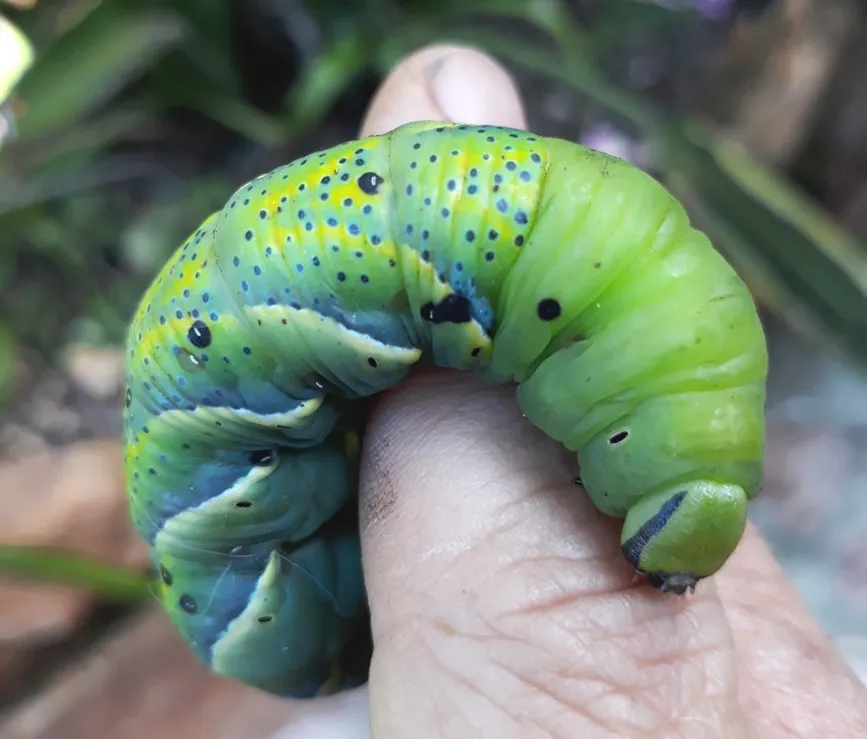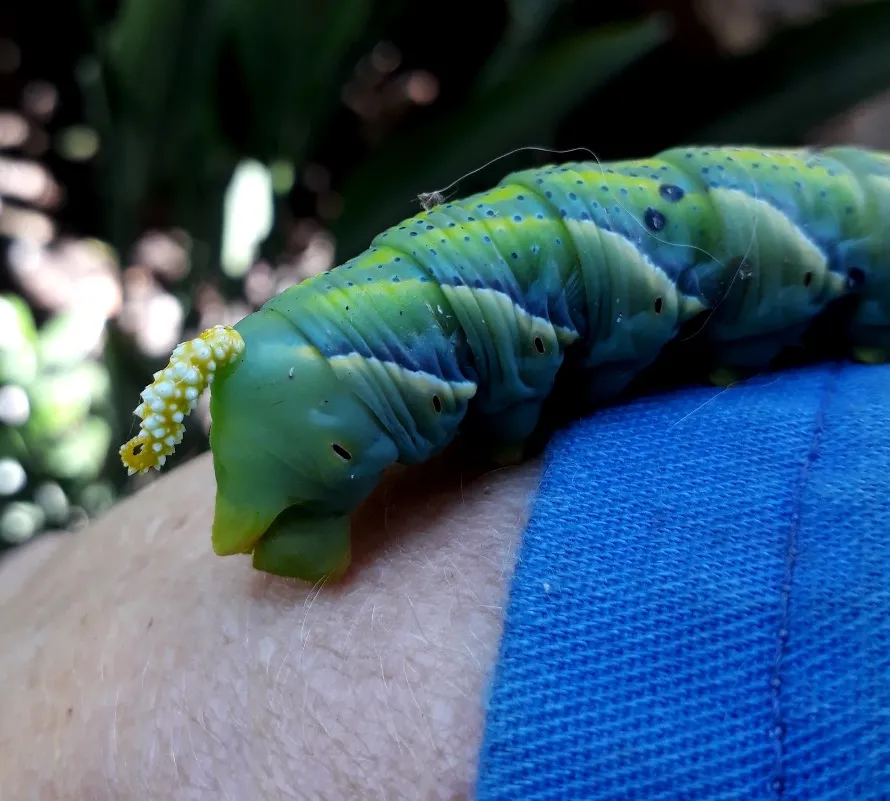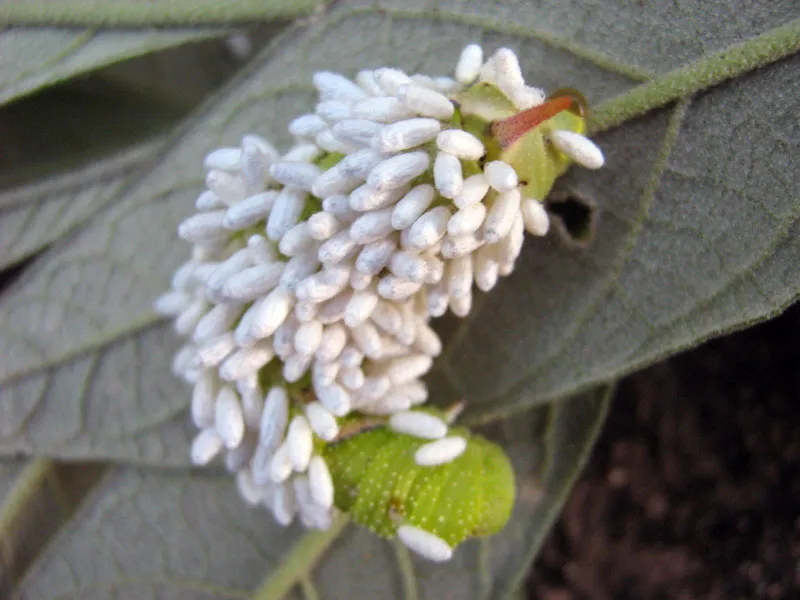
Acherontia atropos aka Death's Head Hawk Moth in a green form. They also come in yellow and purple.
I've never actually seen an adult moth of this famed creature of popular folklore and although they are native to South Africa, I was surprised to find this beauty in my garden. They are so big, some people who don't know better ask if Hawk Moth caterpillars are small snakes... Easily as big as my index finger, it sits comfortably in the palm of my hand.

Hawk Moth caterpillars also have funky little curled tails, apparently the tails scare off predators although these large caterpillars rest during the day relying on their camouflage. At night, they get munching and when you have a caterpillar this size, you wake up one morning and realise that an entire plant has been stripped of its leaves over the past few days. These caterpillars eat plants belonging to the nightshade family and are fond of potato leaves. This dude was probably snacking on the eggplants in my vegetable garden, I found him in that vicinity.

Sadly, all is not well in this creature's world and it will never complete its life-cycle. If you look at the large black spots with white centres on its skin, they are not part of the camouflage, he's been stung numerous times by a Braconid wasp.

Braconid wasps are not parasites but parasitoids, the difference being that a parasite lives within a host without killing it but a parasitoid causes the death of the host. The female injects her eggs under the caterpillar's skin and they hatch out and feed on the living tissues of the worm until they are ready to pupate. They bore their way out of the caterpillar and spin small cocoons on the caterpillar's skin. By the time the young wasps are ready to hatch out of their cocoons, the caterpillar is barely alive and will eventually die of starvation. Perhaps you have seen unfortunate caterpillars like the one below: although it's still alive, it will wander around like a zombie and eventually die.

Author: Alex Popovkin, Bahia, Brazil Source - [Wikipedia commons]: (https://commons.wikimedia.org/wiki/File:Silk_cocoons_of_parasitoid_wasps_on_Manduca_sexta_paphus,Sphingidae-Flickr-_Alex_Popovkin,_Bahia,Brazil(1).jpg)
Although farmers welcome these wasps killing the caterpillars on their crops, I don't mind the occasional hawk moth in my vegetables, the adult moths lay only one egg at a time and I didn't notice damage to the eggplants. I put this unfortunate creature in the creeper and left it to go about its business, I'm not a believer in disrupting natural processes out of sentiment.
Sources:
Identification: Field Guide to Insects of South Africa, 2004 updated edition by Picker, Griffiths and Weaving published by Struik
Read more about Death's Head Hawk Moths on Wikipedia: https://en.wikipedia.org/wiki/Death%27s-head_hawkmoth